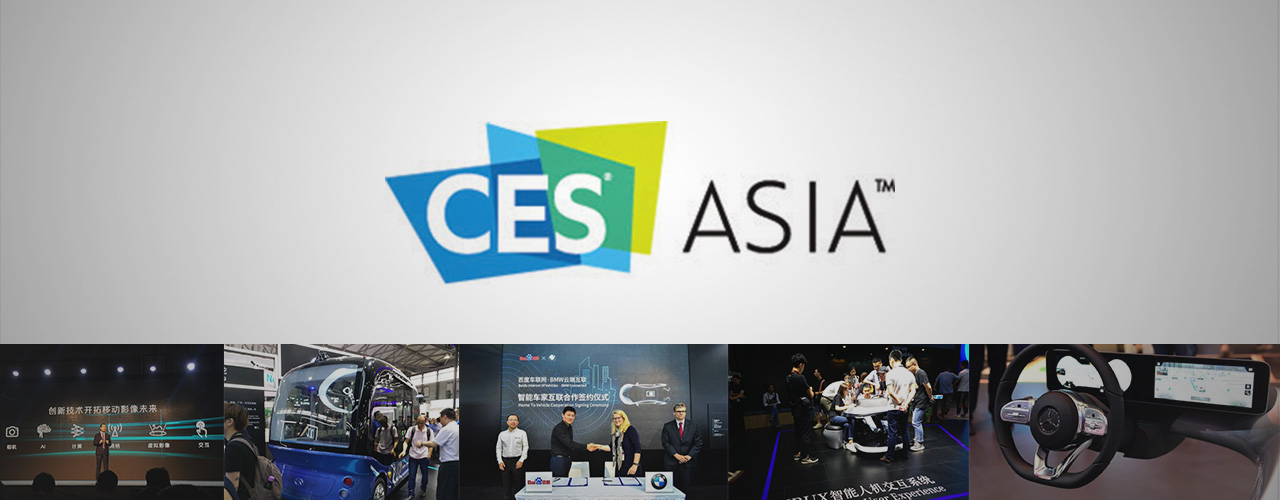
CES Asia 2018 Part 1: Huawei to Shape the Future of Image Technology, Smart Cars Take Center Stage

KEY POINTS
- This week, the Coresight Research team is in Shanghai attending Asia’s fastest-growing consumer technology event, CES Asia 2018, which runs June 13 to June 15. This year’s event has attracted over 500 global companies exhibiting at the show and more than 40,000 attendees and over 1,200 media. This is the first of two reports on our key takeaways from the event, which features the latest product launches and transformative technology, including, artificial intelligence (AI), augmented/virtual reality (AR/VR) and vehicle technology.
- Kevin Ho, President of Handsets Product Line at Huawei, gave a keynote address, which centered on Huawei’s vision of the future of mobile images. Ho believes the breakthroughs in technology to capture images stem from humans’ aspirations in terms of recording, innovating and sharing.
- Smart cars and autonomous driving are taking center stage at CES Asia this year. User interface is also a key area of improvement that is being focused on. We expect autonomous-driving technology to first be applied in specific areas, such as at industrial parks and factories, before being rolled out to the general public transportation system.
Now in its fourth year, CES Asia 2018 has attracted over 500 global exhibitors and more than 40,000 attendees and over 1,200 media. Gary Shapiro, President and CEO of the Consumer Technology Association (CTA), kicked off day one with a keynote address. “We’re proud to bring the entire tech ecosystem together this week in Shanghai to focus on the future of tech,” said Shapiro. “The innovations on the show floor create disruption, but also provide solutions. Self-driving vehicles can stop fatalities; AI is making us safer and healthier and drones are helping in disaster relief…CES Asia focuses on what unites us rather than on what divides us.”
In this first report, we discuss the keynote address from Huawei and innovations in smart cars and autonomous driving.
Huawei Keynote Presentation
The afternoon keynote address on day one of the event was given by Kevin Ho, President of Handset Product Line at Huawei, a leading global provider of information and communications technology (ICT) infrastructure and smart devices. Ho’s keynote centered on Huawei’s vision of the future of mobile image technology. He believes the breakthroughs in technology to capture images stem from humans’ aspirations in terms of of recording, innovating and sharing:
- A thousand years ago, humans drew on paper to record and share.
- In 1888, Kodak invented the first camera to record images.
- In this modern era, we have cameras built into our mobile devices.
The number of photos people take is mushrooming. Ho commented that he believes this is just the beginning and expects a total of 1,300 trillion photos will be taken in 2018. Huawei is reimagining the future era of image recording by bringing breakthroughs to cameras, AI, processing, network, VR and human-to-machine interaction.
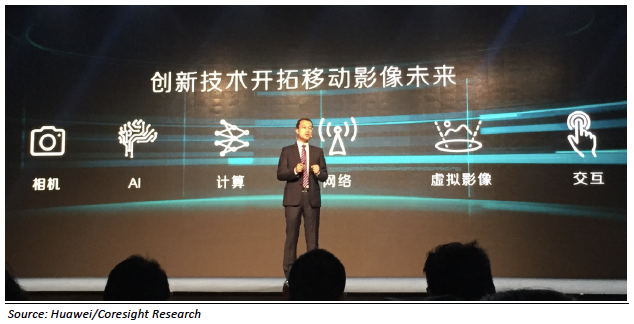
Huawei is introducing several new camera technologies—Metalens, Photon, Femto and 3D image technology—to improve image formation and capturing by smartphones:
- Metalens: Forms an image in a single piece of metalens with nanotechnology.
- Photon: Forms images human eyes cannot see—such as of bacteria.
- Femto: Forms images with reflection.
- 3D images: Captures 3D images that can be seen with the naked eye.
In terms of image-processing technology, the iconic brand announced GPU Turbo to allow seamless integration of software and hardware that reduces energy consumption by 30% and improves image quality to high-dynamic-range imaging. Using Huawei’s Mate 10 as an example, users can experience higher average frame rate and less jitter when playing games compared to the iPhone X.
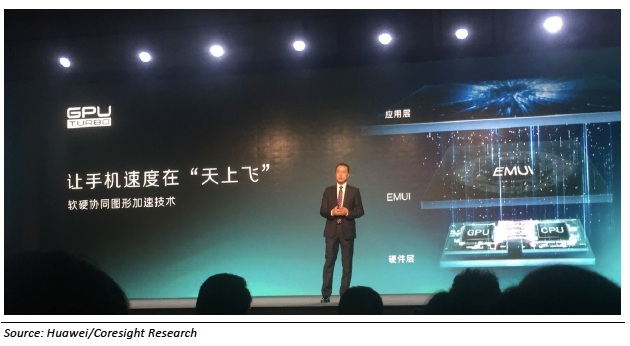
Ho also announced Huawei’s plans for cloud computing. The renowned smartphone brand aims to redefine personal computers with a smartphone that can be turned into a fully-fledged computer with a conventional user interface when connected to a computer screen.
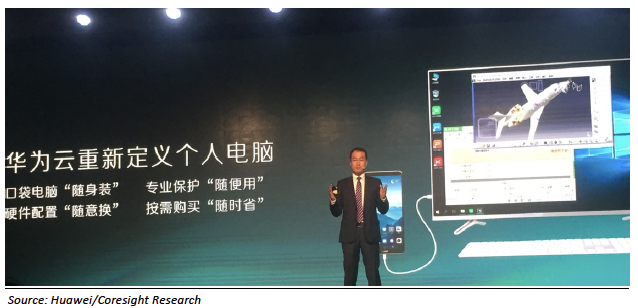
Smart Cars and Autonomous Driving
Baidu
Smart cars and autonomous driving are taking center stage at CES Asia this year. Baidu, China’s dominant Internet search engine operator and one of the largest AI and Internet companies in the world, showcased its driverless bus powered by its Apollo system. The company expects mass production of driverless buses by the end of this year. Driverless vehicles in the public transport system domain will likely take longer. We expect the technology to appear first in driverless buses applied in restricted areas, such as at industrial parks and factories, and then be used in the public transport system by 2022.
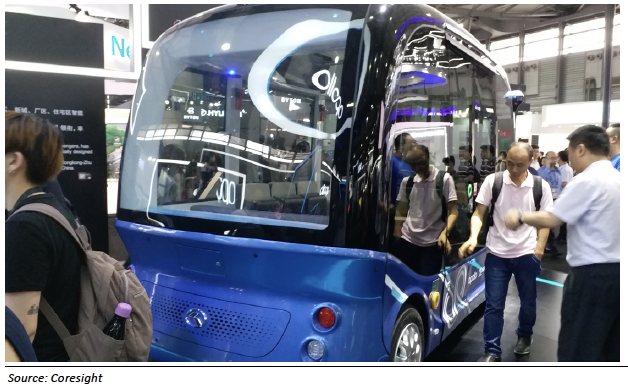
Baidu also announced a new partnership with BMW and Hyundai on autonomous driving and on the next generation human-and-car interaction system. Partnerships with world-class car makers such as BMW and Hyundai are giving a boost to Baidu in its quest to become a pioneer in autonomous car development.
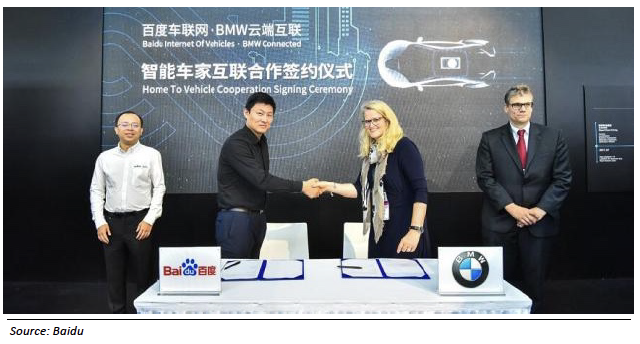
Mercedes-Benz
Commercialization of a fully-fledged autonomous-driving vehicle for the public transport system is more of a longer-term goal. We are also seeing innovations centered on the user interface. For example, Mercedes-Benz is showcasing its Mercedes-Benz User Experience (MBUX) interface at CES Asia 2018, attracting a small crowd to its booth area when we visited.
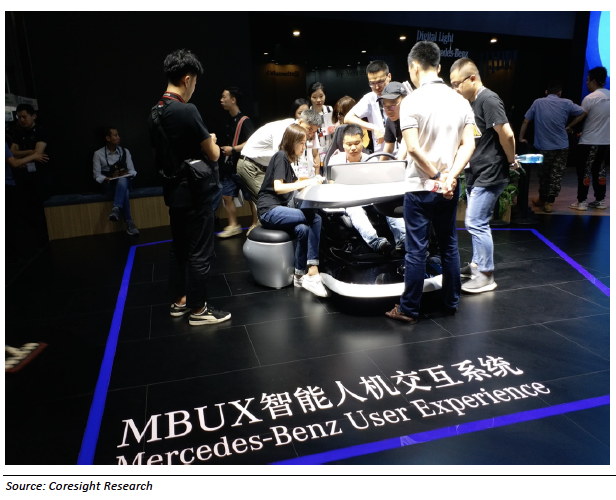
The MBUX interface turns the traditional control panel of a car into a digital screen. Consumers have become accustomed to the user interface of a smartphone, which presents information they want on a digital screen rather than on a fixed set of interfaces. The interface also supports personalization, whereby any information can be displayed anywhere on the digital screen.
The MBUX system also supports voice commands powered by AI that support Mandarin, Cantonese and the Sichuan dialect.
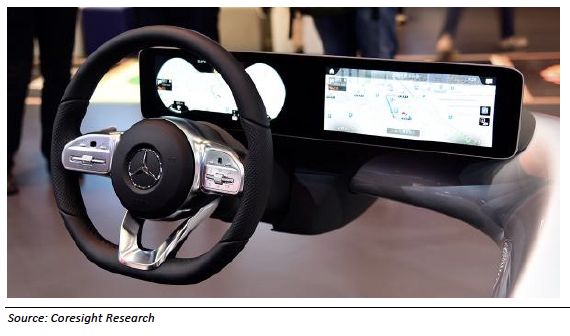
Other Carmakers
Other car makers are also fighting for the spotlight at CES Asia 2018:
- Byton, the Chinese electric car startup, launched its second concept car, the Byton K-Byte, designed for self-driving and in-vehicle entertainment.
- Cadillac presented the Super Cruise, a hands-free driving system for the highway.
- Honda announced its Honda Xcelerator project to cooperate with innovative enterprises worldwide.
Key Takeaways
CES Asia 2018 has attracted over 500 global companies exhibiting at the show and more than 40,000 attendees and over 1,200 media. On day one, we saw Huawei reimagining the future era of image recording by bringing breakthroughs to cameras, AI, processing, network, VR and human-to-machine interaction. Autonomous driving will first be used in specific areas such as at industrial parks and factories before being rolled out to the public transportation system.
